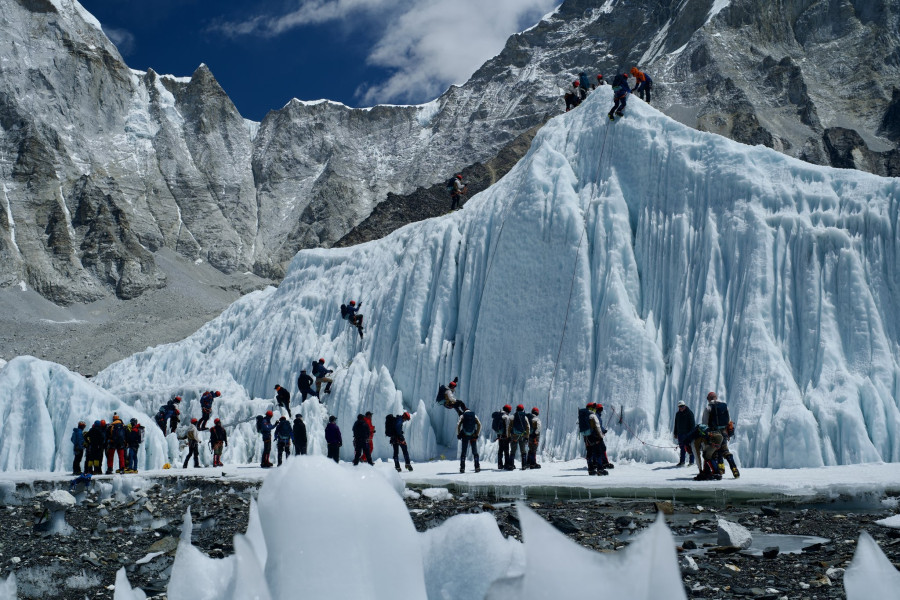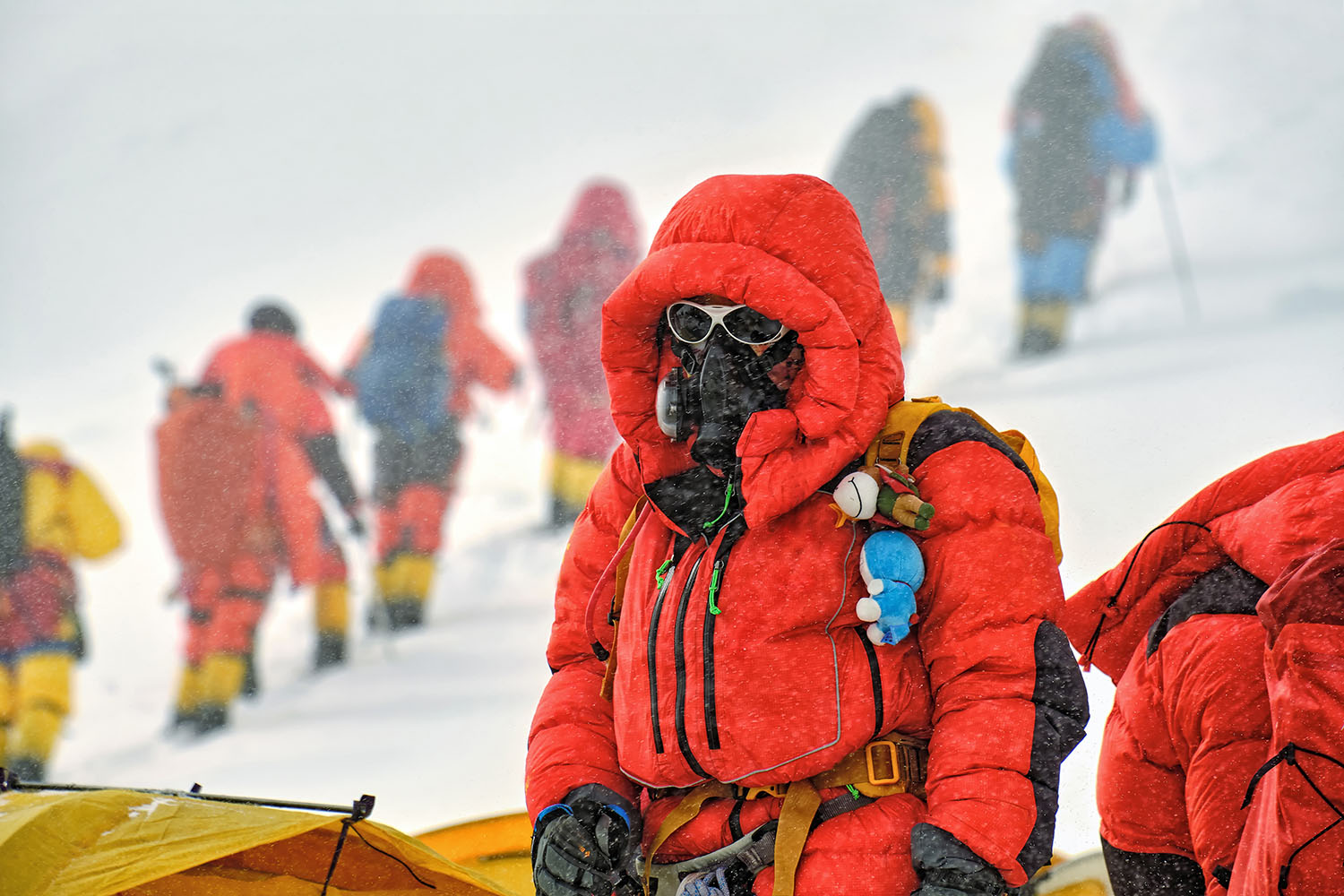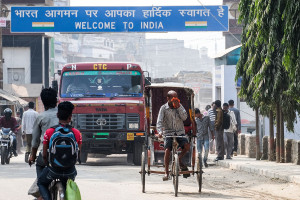Money
Everest gridlock fears return as erratic weather narrows climbing window
With hundreds aiming for top, officials say, delays could trigger a dangerous bottleneck.
Sangam Prasain
Unpredictable weather patterns are shrinking the summit window for Everest climbers this spring, again stoking fears of overcrowding on the world’s highest peak. Despite the second-highest number of permits ever issued, many teams remain put at base camp, awaiting safer conditions.
Expedition operators warn that if the narrow weather window continues to contract, a repeat of past traffic jams—where climbers are forced to wait in line in the ‘death zone’ above 8,000 meters—could become inevitable.
“This season doesn’t look promising,” said Pemba Sherpa, executive director of 8K Expedition, which has been assigned the critical rope-fixing task from Camp II to the summit. “It’s been five days since the route opened, but barely has any team moved. If this continues, we’re going to see major congestion once the weather clears.”
The official climbing season kicked off on May 9, when a rope-fixing team summited Everest earlier than usual, paving the way for other expeditions. Two Nepali guides followed on May 10, and 14 climbers—including six foreigners—reached the top on May 11. But by Monday, strong winds forced many groups to abort their campaign.
Operators had hoped that the early route opening would enhance safety and reduce summit-day pileups. But extreme wind conditions have paused ascents and compressed the window for safe ascent.
“The longer climbers wait, the more the risk,” Sherpa said. “Almost 100 climbers are preparing to make a push on Tuesday night. The winds are expected to die down by Wednesday.”
Most of those climbers have now reached Camp IV at 7,920 metres, the final staging point before the summit bid. The season typically wraps up before the monsoon’s onset in early June, leaving less than two weeks for remaining teams to make their move.

So far this spring, Nepal’s Department of Tourism has issued permits to 456 foreign climbers, just shy of the record 479 granted in 2023. When factoring in Nepali guides, often assigned at a one-to-one ratio, more than 1,000 people may try to reach the top.
“The success rate could be as low as 25 percent,” said Sherpa, citing ongoing poor weather and the growing number of climbers giving up. “When everyone waits for the same few clear days, that’s when things get dangerous.”
Memories of past Everest traffic jams loom large. On May 22, 2008, 135 climbers summited in a single day. That figure rose to 179 in 2012 and to 266 in 2013. The most notorious year was 2019, when a record 354 people reached the summit on May 23, according to the Guinness World Records, a British reference book published annually that lists world records of human achievements and the extremes of the natural world.
A now-iconic photo by climber Nirmal “Nims” Purja, taken on May 22, 2019, shows a line of hundreds snaking up the narrow Hillary Step—some descending, others ascending—exemplifying the deadly consequences of a tight summit window.
Three climbers died on the mountain that day.
This year, several critical dates have emerged as possible summit windows—May 14, 15, 17, 18, 23, and 24—based on reports from weather experts stationed at base camp, including international forecasters.
Himal Gautam, director at the Department of Tourism, confirmed that 150 climbers are preparing to push on Tuesday and Wednesday. “Some are at Camp II, and others are already in Camp IV,” he said. “The weather is unpredictable, and yes, the success rate this year will likely dip.”
Gautam said that while plans are always in place to manage crowds and ensure safety, weather disruptions can throw those plans into chaos. “There’s no need to panic yet,” he added. “But we must acknowledge that weather disturbances could make crowd control very difficult again this year.”
The government has deployed four experienced officials to monitor activities in the Everest region. But lessons from past seasons show things can quickly spiral out of control when hundreds of climbers are funnelled into a narrow summit window.
The stakes are high. Harsh weather in the Himalayas can be lethal. Research shows that near the Everest summit, the typical wind chill falls below minus 30°C throughout the year. During spring, wind chill values can plummet to minus 50°C, and in severe storms, they can reach minus 60°C, conditions more typical of winter than spring. In such extreme cold conditions, frostbite can occur in as little as a minute.
“High winds are especially dangerous. They increase the risk of frostbite and drain energy and oxygen reserves,” said Sherpa. “Once your energy drops, and oxygen runs low, that’s when climbers die.”
Since Edmund Hillary and Tenzing Norgay first summited Everest in 1953, nearly 9,000 people have followed in their footsteps. More than 280 climbers have died in the attempt.




 8.12°C Kathmandu
8.12°C Kathmandu













